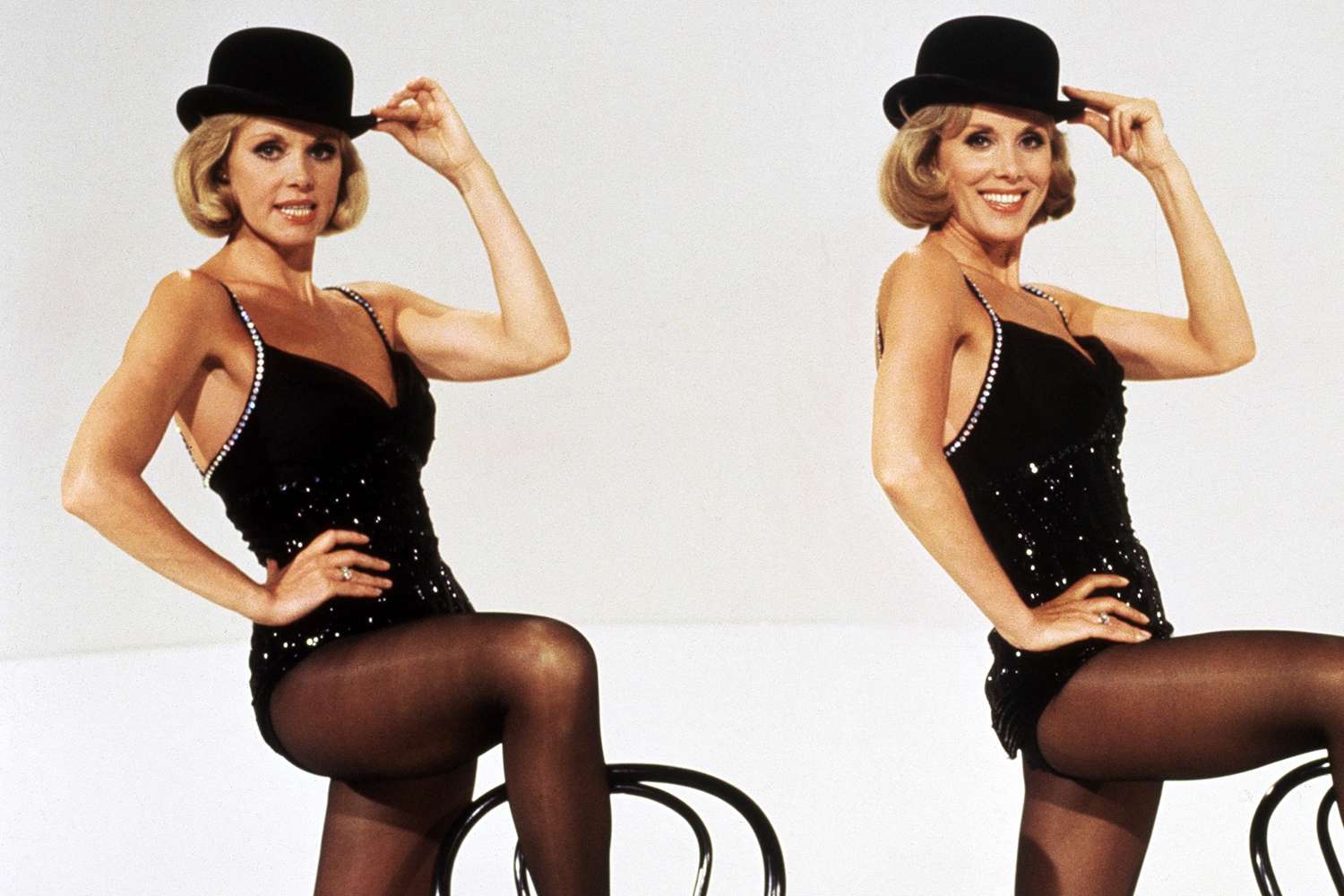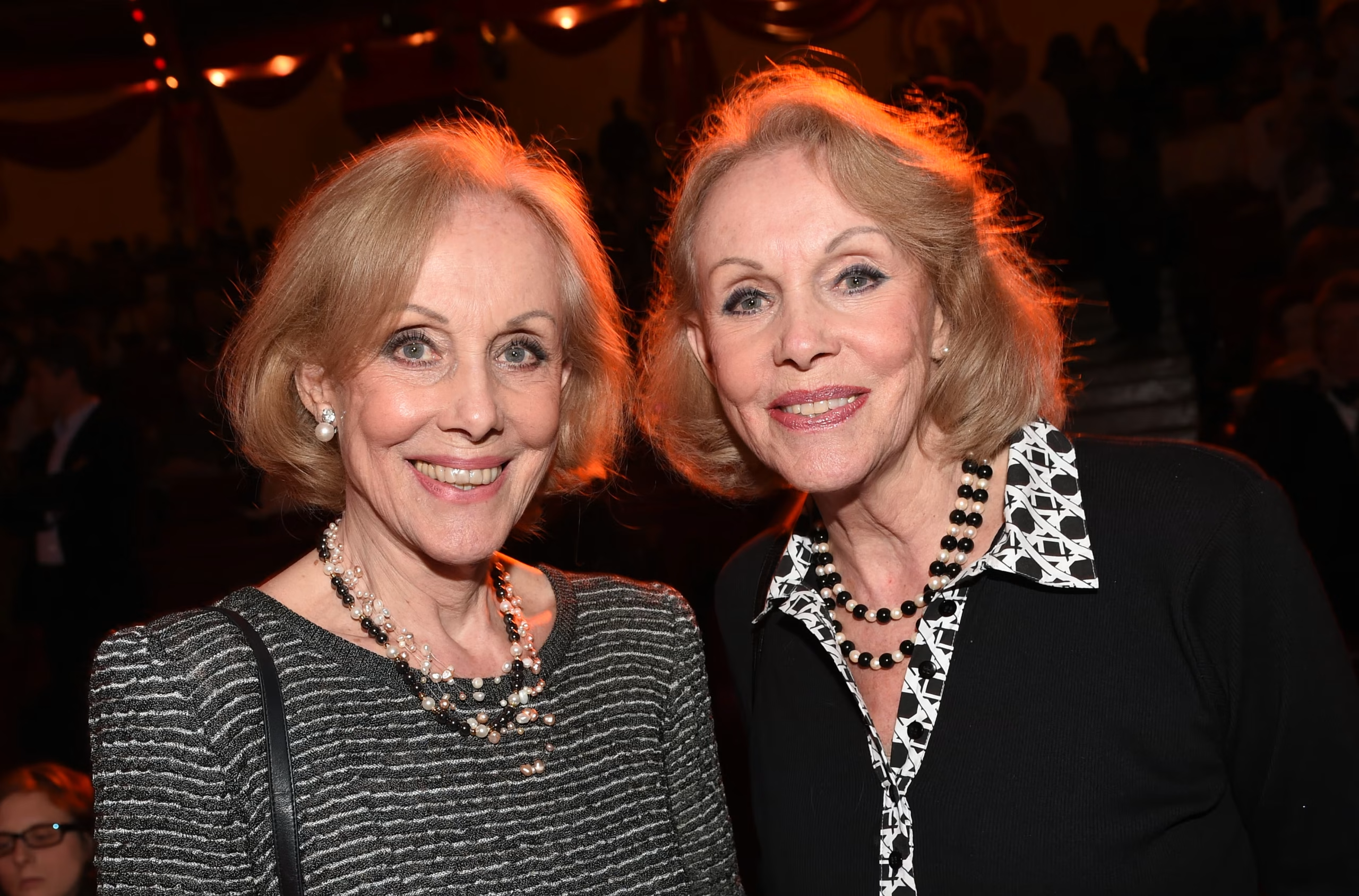Born in 1936 amid the turmoil of East Germany, Alice and Ellen fled west in 1952, channeling their ballet roots into a revue career that exploded in the 1950s. They became sensations across Europe, earning the nickname "The Nation's Legs" for their flawless dance routines and vibrant stage presence. Fans still recall their electric performances alongside Frank Sinatra and Dean Martin on American television, moments that blended German precision with Italian passion. Their lives, intertwined from birth, ended in quiet solidarity, a final testament to a partnership that outshone spotlights and spanned continents.

Alice and Ellen Kessler, radiant and in perfect sync during a vibrant 1960s Studio Uno routine, showcase the dazzling footwork that earned them fortunes alongside Fred Astaire and Frank Sinatra— a youthful spark that evolved into a wise, charitable legacy worth millions.
From Revue Stages to Riches: Tracing the Kessler Twins' Earnings Journey
The Kessler twins' path to financial success mirrored their dance steps, precise and unrelenting. Born in 1936 in East Germany, Alice and Ellen began their training with the Leipzig Opera ballet as children, a foundation that propelled them forward after their family fled to West Germany in 1952. By age 16, they joined a revue theater in Düsseldorf, where their identical charm and synchronized routines quickly drew crowds in the post-war cabaret scene.
Those early performances, often in smoky venues packed with audiences craving escapism, laid the groundwork for steady income, though exact figures from the mid-1950s remain elusive in historical records. Comparable top acts of the era, like those at the Palladium, could earn several thousand Deutsche Marks per week, a sum that translates to roughly $10,000 to $20,000 in today's dollars when adjusted for inflation and purchasing power. For the twins, these gigs represented not just paychecks but a launchpad, building their reputation as rising stars in Europe's recovering entertainment world.
Their true breakthrough arrived with the 1959 Eurovision Song Contest, where they represented West Germany with the upbeat "Heute Abend wollen wir tanzen geh'n," finishing eighth and exposing them to millions across the continent. This performance, a lively ode to a night of dancing and romance, opened doors to recording deals and broader tours, with initial royalties from vinyl sales providing a reliable trickle of revenue that would grow over decades.
Yet it was their move to Italy in the early 1960s that sealed their prosperity, transforming them into household names and financial powerhouses. Settling in Rome, they became fixtures on RAI television, headlining the blockbuster variety series Studio Uno from 1961 to 1966 alongside Italian sensations like Mina. Their signature opener, the playful "Da-da-un-pa" routine, became a cultural phenomenon, blending high kicks and harmonious vocals in ways that captivated post-war viewers hungry for glamour.
Salaries for top talents on such programs were substantial for the time, often exceeding 50 million lire per season—equivalent to about $75,000 in 1960s dollars, or over $700,000 today—supplemented by lucrative endorsement deals with fashion brands and cosmetics firms eager to associate with their elegant, leggy image. Record sales from hits like their Eurovision entry and subsequent albums added layers to their income, with European charts yielding ongoing royalties that savvy managers funneled into savings and investments.
Collaborations with global icons further elevated their earning potential, turning one-off appearances into career-defining windfalls. In the glittering casinos of Monte Carlo and Las Vegas, they shared stages with Fred Astaire, whose masterful tap and ballroom expertise inspired the twins to refine their own precision choreography during joint routines that blended classic elegance with their youthful vigor.
Astaire, ever the perfectionist, reportedly praised their footwork as "effortless poetry," a nod that opened invitations to perform alongside Frank Sinatra's suave crooning and Dean Martin's laid-back charisma. These high-profile pairings, often at exclusive venues like the Lido de Paris, commanded premium fees and exposure, while photos from those nights—Alice and Ellen in sequined gowns twirling with the legends—graced magazines, boosting their marketability for future bookings.
Venturing to the U.S. in the mid-1960s amplified their income streams even more, bridging European revue flair with American television's vast audiences. Multiple guest spots on The Ed Sullivan Show, including a memorable 1964 rendition of "The Best Is Yet to Come," showcased their versatility to stateside fans, with payments for international acts typically ranging from $5,000 to $15,000 per episode in that era.
Their appearances on The Dean Martin Show followed suit, blending humor and harmony in segments that highlighted their twin synergy, netting similar payouts while fostering connections with Hollywood's elite. Beyond TV, film cameos in Italian-German co-productions like The Last Roman (1968) and peplum adventures such as Erik the Conqueror (1963) provided upfront fees plus backend royalties, though modest compared to their live work—often a few thousand dollars per role, with residuals trickling in from international syndication over the years. These diversified ventures, from stage to screen, ensured a buffer against the entertainment industry's unpredictability.
Over four decades, Alice and Ellen Kessler's combined earnings likely surpassed $10 million in adjusted terms, a fortune built on talent, timing, and shrewd choices in an era when most performers faded without financial footholds. Their net worth at the time of their passing hovered between $1.1 million and $5.6 million, reflecting prudent investments in real estate and cultural philanthropy rather than lavish excess.
According to analysis reviewed by Finance Monthly, their diversified approach—spanning TV, records, endorsements, and strategic collaborations—turned fleeting fame into lasting security, a blueprint for aspiring performers navigating volatile industries today. In a field where stars like the twins could command the spotlight one season and vanish the next, their story whispers a timeless lesson: harmony in art and assets alike endures.
The Generous Exit Strategy: How the Kesslers' Charitable Will Dodges Taxes and Inspires Everyday Planners
At the core of the Kessler twins' story lies a financial masterstroke that transforms sorrow into solace, their decision to channel their $5 million to $8 million estate into charitable causes. Without children or heirs, Alice and Ellen directed most assets to organizations like Doctors Without Borders and animal welfare groups, a move that not only honors their values but also sidesteps hefty inheritance taxes in Germany. This planned giving, often called philanthropic estate planning, simply means earmarking part or all of your wealth for charities in your will, ensuring it supports good works rather than eroding through government levies.
In plain terms, inheritance tax in Germany can climb to 50 percent for non-relatives, devouring fortunes before they reach intended hands. Yet charitable bequests enjoy full exemption, allowing every euro to fuel missions like global aid or pet rescues, as the twins envisioned. This insight reveals a hidden perk for high-net-worth individuals without direct family, turning potential losses into societal gains. For context, over 30 percent of wealthy Europeans now incorporate such giving, per recent surveys, amplifying impact while trimming tax bills by millions.
Estate planning expert David J. Walny, featured in CNBC discussions on celebrity legacies, highlights this strategy's power. He notes that thoughtful bequests protect wealth from erosion and create ripples of good, much like the Kesslers' choice to mingle their ashes with their mother's and beloved dog's in a Bavarian resting place. Imagine a family business owner, facing similar tax pressures, redirecting surplus to local shelters, their legacy blooming in community lives rather than courtrooms. This approach demands early consultation with advisors, but for consumers eyeing retirement, it offers control and compassion in equal measure, proving even in farewell, the twins lead with elegance.

Captured in classic black and white, Alice and Ellen Kessler's radiant smiles reflect the joyful harmony that built their stardom—dancing with icons like Fred Astaire, earning millions, and now gifting it all to causes that echo their enduring bond.
Tributes Resound: Fresh Remembrances Honor the Kessler Twins' Enduring Spark
As dawn broke on November 18, 2025, social media brimmed with fresh tributes, weaving the Kessler twins into today's conversations. The Ed Sullivan Show archives shared a poignant clip of their 1960s performance, captioning it a salute to "dazzling stars whose steps echoed joy through generations." Italian outlets like RAI aired retrospectives, while fans in Munich laid flowers at their villa gates, murmuring prayers for the duo's peaceful union.
Radio Monte Carlo broadcast listener stories of first encounters with the twins' routines, evoking tears and cheers alike. These immediate responses, from Hollywood echoes to Bavarian streets, affirm Alice and Ellen's grip on hearts worldwide. Their story, unfolding in real time, reminds us that true icons leave trails of emotion long after the curtain falls, inviting us to cherish our own bonds a little tighter.
What Fans Are Wondering: Insights Beyond the Spotlight
What Were the Kessler Twins' Signature Dance Moves That Captivated Audiences?
The Kessler twins mesmerized with high-kicks and twirls in routines like "Da-da-un-pa," a playful jig blending ballet flair and revue energy. Performed in glittering gowns on Italian TV, these moves symbolized post-war optimism, drawing cheers from crowds who saw freedom in every synchronized leap. Their precision, honed from childhood lessons, turned simple steps into spectacles, influencing dance troupes even now and keeping vintage clips alive on platforms like YouTube for new admirers.
How Have Assisted Dying Laws Evolved in Germany Since the 2020 Ruling?
Germany's 2020 Federal Constitutional Court decision affirmed self-determined death as a fundamental right, paving the way for regulated assisted suicide without criminal penalties if voluntary. By 2025, guidelines emphasize counseling and safeguards, with over 1,000 cases annually reported, reflecting growing acceptance amid debates on dignity. This shift, born from patient advocacy, balances autonomy with ethics, offering terminally ill individuals compassionate options while sparking broader European discussions on end-of-life care.
Which Other Entertainment Icons Have Left Fortunes to Animal Welfare Causes?
Icons like Betty White funneled millions to the Morris Animal Foundation, supporting spay-neuter programs that save countless strays yearly. Similarly, Bob Barker dedicated $300 million from The Price Is Right earnings to anti-cruelty efforts, funding shelters nationwide. These bequests highlight a trend among stars, where love for pets translates to endowments that sustain rescues, proving entertainment's glitter can light paths for vulnerable creatures long after the applause fades.














